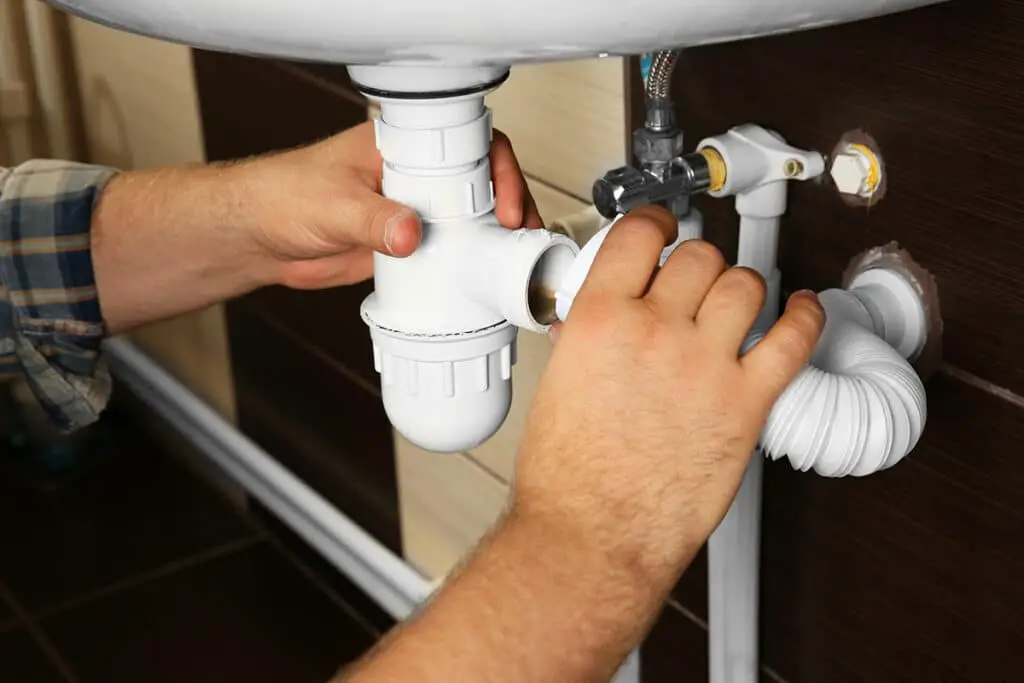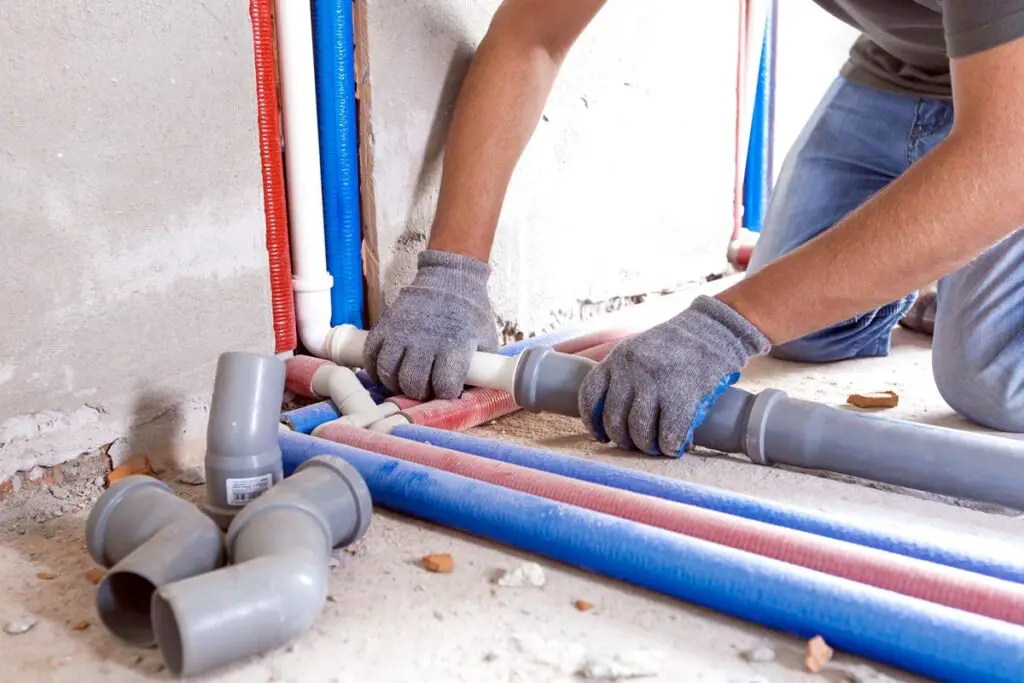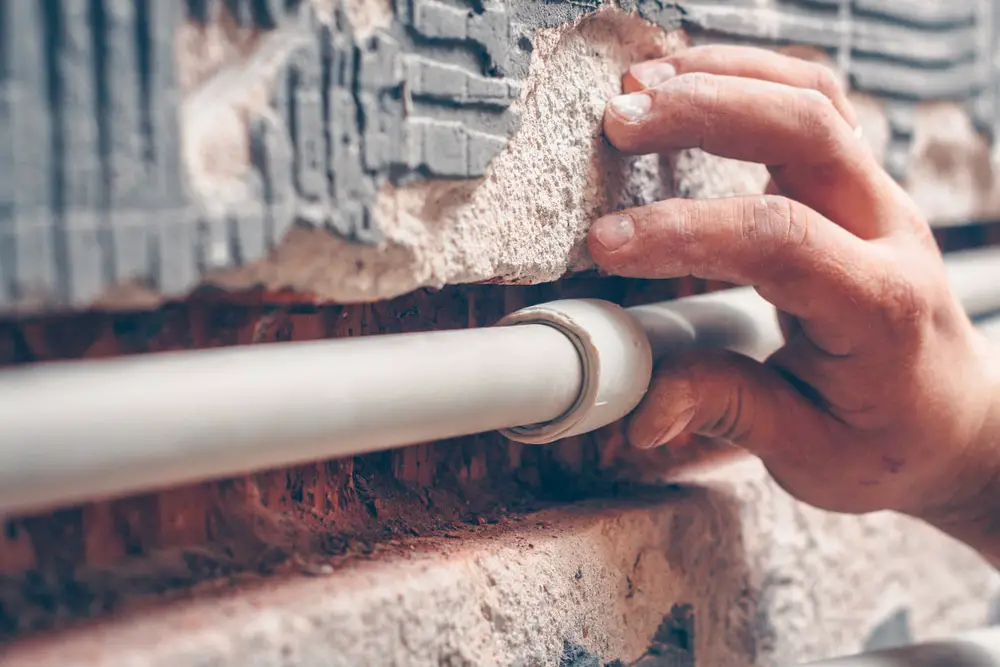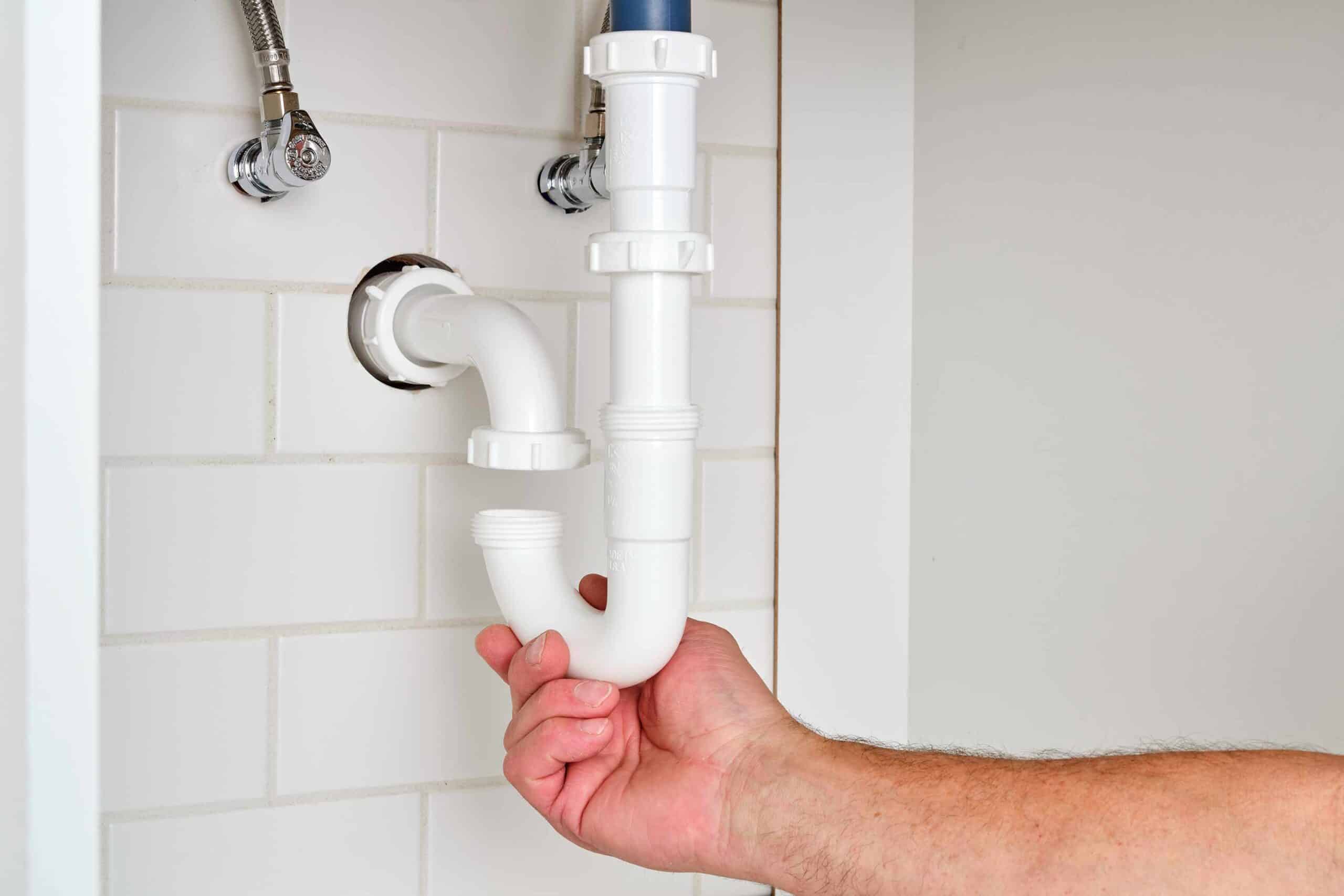How To Hide Plumbing Pipes
Introduction
How To Hide Plumbing Pipes: Concealing plumbing pipes is a common concern for homeowners who want to maintain a neat and aesthetically pleasing environment in their homes. While exposed pipes can be functional, they often create an unsightly appearance that disrupts the overall design of a space. Fortunately, there are various techniques available to hide plumbing pipes effectively. Whether you’re dealing with visible pipes in a bathroom, kitchen, or any other area.
One of the simplest and most popular ways to hide plumbing pipes is through the use of decorative pipe covers or sleeves. These covers are available in a variety of materials, such as PVC, metal. Wood, allowing you to choose the option that best matches your interior decor. They can be easily installed by slipping them over the pipes, instantly giving them a more polished and finished appearance.
Another effective method is to incorporate built-in features or structures that can cleverly conceal the plumbing pipes. For example, a false wall or a custom-built cabinet can be designed to accommodate the pipes while providing easy access for maintenance. These solutions not only hide the pipes but also provide additional storage or display areas, maximizing the functionality of the space.

How do you hide plumbing in the wall?
Building a non-load-bearing false wall is a simple way to hide pipes and other utilities you’d rather not see. False walls work well in areas like laundry rooms that have no shortage of exposed drain pipes, wires, electrical conduit, receptacles, and ducts. This is usually the case in older homes.
Concealing plumbing pipes is a common concern for homeowners who strive for a clean and visually appealing living space. Exposed pipes can disrupt the aesthetics of a room and detract from its overall design. However, with the right techniques and a bit of creativity. Hiding plumbing pipes can be achieved effectively. This guide will provide you with practical ideas and methods. To hide plumbing pipes and create a seamless and attractive environment.
One of the simplest ways to hide plumbing pipes is through the use of pipe covers or sleeves. These covers are available in various materials such as PVC, metal, or wood, and can be easily installed by sliding them over the pipes. Not only do they hide the pipes. They can also add a decorative touch to the space, blending in with the overall design scheme.
Another effective method is to incorporate built-in features or structures that conceal the pipes. For example, a false wall or a custom cabinet can be designed to accommodate the pipes while providing easy access for maintenance. These solutions not only hide the pipes but also offer additional storage or display areas, maximizing the functionality of the room.
What can I use to hide bathroom pipes?
Basins with a full or semi pedestal are great for hiding unsightly pipework, and it’s not difficult to replace an old sink with a stylish new one. Pedestal basins come in a wide range of sizes to suit any bathroom, as well as modern and traditional styles, and they are the easiest type to install.
There are several options available to hide bathroom pipes and create a more visually appealing space. Installing a vanity or sink cabinet is a common method to hide bathroom pipes. These cabinets provide storage space while effectively concealing the pipes beneath the sink. Choose a style and design that complements your bathroom decor.
Pipe covers or sleeves designed specifically for bathroom pipes can be used to hide exposed plumbing. These covers are available in various materials and finishes, such as chrome, brushed nickel, or PVC. They can be easily installed by sliding them over the pipes, instantly giving them a more polished and finished appearance.
Creating a false wall is a more extensive option but provides a seamless and hidden solution for bathroom pipes. By constructing a partition wall in front of the pipes, you can hide them completely. This also offers an opportunity to incorporate additional storage, such as recessed shelves or cabinets. Another option is to install wall-mounted cabinets or shelves above or beside the bathroom pipes. These functional storage units not only provide a way to hide the pipes but also offer extra space for toiletries, towels, or decorative items.
Decorative screens or room dividers can be strategically placed to block the view of exposed pipes in the bathroom. These screens come in various designs, materials, and sizes, allowing you to choose one that suits your style and fits the space appropriately.
Can I put plumbing in the wall?
The best practice is to avoid having water pipes located in exterior walls or through unheated attics. It is preferable to have plumbing fixtures aligned with interior walls. If pipes are located in exterior walls, the pipes should be insulated.
Yes, it is possible to install plumbing in the wall. This method is commonly used in construction and renovation projects to conceal plumbing pipes and fixtures, creating. A clean and streamlined look in bathrooms, kitchens, and other areas.
Before installing plumbing in the wall, it is crucial to ensure compliance with local building codes and regulations. Plumbing codes vary by region and typically dictate the proper installation methods, materials, and safety requirements. It is recommended to consult with a licensed plumber. Building authority to ensure your plans align with the applicable codes.
While hiding plumbing in the wall can create a neat appearance, it is essential to plan for future maintenance and repairs. Access panels or removable sections can be incorporated into the wall to provide easy access to the plumbing system. Minimizing the need for extensive wall demolition in case of any issues.
Plumbing work, especially within walls, is best handled by a licensed and experienced plumber. They have the expertise to properly install the pipes, valves, and fixtures while ensuring proper connections and leak-free operation. Hiring a professional ensures that the installation is done correctly and meets all necessary standards.
When placing plumbing pipes in the wall, it is essential to consider insulation to prevent freezing or condensation issues. Properly insulating the pipes can help protect them from extreme temperatures and reduce the risk of pipe damage or water leakage.
How do you hide exposed toilet pipes?
Building a fake wall is an effective way to conceal exposed plumbing. You can use materials such as drywall, wood paneling, or even tile to create this effect. This is a great way to hide plumbing while also creating additional storage space and making the entire room look more polished. Hiding exposed toilet pipes can be accomplished through various methods, allowing you to create a more visually pleasing and streamlined look in your bathroom.
A toilet skirt or concealer is a decorative panel that surrounds the base of the toilet, effectively hiding the exposed pipes. These skirts are typically made of materials such as wood, PVC, or acrylic and can be easily installed using adhesive or brackets.
They come in a range of styles and finishes to match your bathroom decor. Another option is to create a built-in enclosure around the toilet pipes. This involves constructing a box or cabinet around the toilet, leaving a removable access panel for maintenance purposes. The enclosure can be customized to match your bathroom design and can even provide additional storage or shelving space.
Consider installing a half wall or partition to visually separate the toilet area from the rest of the bathroom while concealing the exposed pipes. This partial wall can be constructed using various materials, such as glass, tiles.
Drywall, and can serve as a decorative feature while effectively hiding the plumbing. Placing decorative screens or room dividers strategically can help block the view of exposed toilet pipes. These screens come in different designs, materials, and sizes, allowing. You to choose one that complements your bathroom style and provides the desired level of coverage.

How do you hide the pipes with a free standing bath?
You could stud out walls to accommodate pipework or even have false floors raising your bath off the existing floor and hide the waste that way, and make a feature of your freestanding bath.
Hiding the pipes with a freestanding bath can be a bit more challenging since the bath is not connected to a wall where you can conceal the plumbing. However, here are a few suggestions to help you achieve. Consider installing a skirting or paneling around the base of the freestanding bath.
This can be constructed using materials such as wood, tiles, or acrylic. The skirting or paneling should be designed to fit snugly against the bath, covering the exposed pipes. It can be attached using adhesive or brackets, providing a neat and finished appearance.
Decorative Screens or Room Dividers, Positioning decorative screens or room dividers strategically can help block the view of the exposed pipes around a freestanding bath. These screens come in various styles, materials, and sizes, allowing you to choose one that complements your bathroom decor and provides the desired level of coverage.
Another option is to strategically place furniture or decorative elements near the freestanding bath to obscure the view of the pipes. For example, a small decorative table or a tall potted plant can be positioned in front of or beside the bath, effectively concealing the plumbing while adding a touch of style to the space.
How can I ensure access for maintenance or repairs when hiding plumbing pipes?
When concealing plumbing pipes, it’s crucial to plan for future access in case of maintenance or repairs. Consider incorporating access panels, removable sections, or easily accessible openings in the design. This allows for convenient inspection or repair without the need for extensive demolition or removal of concealed elements. Ensuring access for maintenance or repairs when hiding plumbing pipes is crucial to avoid potential issues in the future.
Incorporate access panels into the design when hiding plumbing pipes. These panels can be installed within walls, ceilings, or cabinetry and provide a convenient way to reach the concealed pipes when needed. Access panels can be designed to match the surrounding materials and can be easily opened or removed for maintenance or repairs.
When concealing plumbing pipes, consider creating removable sections in the construction. This could involve using detachable panels or modular components that can be easily disassembled to access the pipes. By incorporating removable sections, you can provide a direct and straightforward way to reach the concealed plumbing system.
Plan for service openings in strategic locations to provide access points for maintenance or repairs. These openings can be created in walls, floors, or cabinets specifically designed to accommodate the pipes. By including service openings, you can access the concealed plumbing system without the need for extensive demolition or removal of concealed elements.
Do I need to follow any specific building codes when hiding plumbing pipes?
Yes, it’s essential to comply with local building codes and regulations when hiding plumbing pipes. Plumbing codes vary by region and dictate the proper installation methods, materials, and safety requirements. Consulting with a licensed plumber or building authority is advisable to ensure your project aligns with the applicable codes.
Yes, it is essential to follow specific building codes and regulations when hiding plumbing pipes. Building codes are put in place to ensure safety, proper installation, and adherence to specific standards in plumbing systems. These codes may vary by region or jurisdiction. So it’s important to consult with local authorities. A licensed plumber to understand the specific requirements that apply to your location.
Building codes prioritize safety by outlining specific guidelines for the installation, materials, and accessibility of plumbing systems. Compliance with these codes helps prevent potential hazards such as leaks, water damage, or improper connections that can lead to health and safety risks.
Building codes often stipulate certain standards for the quality and durability of plumbing materials and installation practices. By adhering to these codes, you can ensure that your hidden plumbing pipes are constructed. To withstand normal usage and potential stress over time.
Non-compliance with building codes can impact insurance coverage and legal matters. Insurance companies may require proof of code compliance, and non-compliance could lead to coverage issues in the event of a plumbing-related incident. Additionally, during property inspections or when selling a home, non-compliant plumbing work can raise concerns and affect the property’s value.
Can I hide all plumbing pipes in my home, or are there limitations?
While many plumbing pipes can be hidden, there are some limitations to consider. Certain pipes, such as gas lines, water supply lines, and vent pipes, may require specific clearance or access for safety purposes. It’s important to consult with a licensed plumber or professional to determine the feasibility of hiding specific types of pipes and to ensure compliance with safety standards.
Hiding all plumbing pipes in a home is not always feasible or advisable. While it may be possible to conceal some pipes. There are limitations to consider. Accessibility for Maintenance, It’s essential to maintain accessibility to plumbing pipes for regular maintenance and potential repairs. Completely hiding all pipes can make it challenging to access and address issues that may arise in the future. It’s crucial to ensure that concealed pipes can be easily accessed when needed.
Local building codes and regulations often have specific requirements regarding the installation and accessibility of plumbing systems. These codes are in place to ensure safety and functionality. It’s important to consult with a licensed plumber. Building authority to determine the specific regulations that apply to your area.
Some pipes, such as gas lines or water supply lines, have specific safety requirements and may need to be visible and accessible for safety purposes. Concealing certain types of pipes without proper considerations for safety can lead to hazards and potential risks.

Conclusion
Concealing plumbing pipes is a practical and aesthetic concern for homeowners who desire a clean and visually pleasing living environment. Throughout this guide, we have explored various techniques and ideas to effectively hide plumbing pipes in different areas of the home. By employing these strategies, homeowners can maintain a seamless and stylish design while ensuring the functionality and accessibility of their plumbing system.
One of the key takeaways from this discussion is the use of decorative pipe covers or sleeves. These covers not only serve the purpose of concealing the pipes but also add an element of visual appeal to the space. Available in a range of materials and styles, they can be easily installed and customized to match the interior decor.
Incorporating built-in features or structures can be a highly effective method to hide plumbing pipes. By integrating false walls, custom cabinets, or other functional elements. Homeowners can create a seamless blend between the pipes and the surrounding environment. These solutions not only provide an attractive facade. Also offer practical benefits such as additional storage or display areas.
Camouflage techniques, such as painting the pipes to match the wall color or using wallpaper and adhesive vinyl, provide another creative approach to hiding plumbing pipes. These methods allow the pipes to blend into the background and become less noticeable. Maintaining the overall harmony of the room.
By applying the techniques and ideas discussed in this guide. Homeowners can successfully hide plumbing pipes and achieve a visually pleasing environment. From decorative covers to built-in features and camouflage techniques. There are numerous options available to suit various design preferences and requirements.








